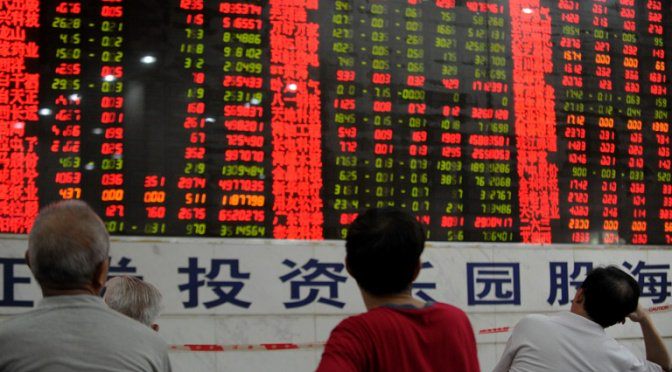China A-Shares in the MSCI Emerging. A Look at the Chart of the CSI300

An important step was moved the last week towards the integration of the Chinese economy within the financial world. The index giant MSCI has finally decided to include, next year, 222 China mainland stocks to its emerging markets index. The proposal had been rejected three times in the recent years.
It’s a big decision since MSCI controls the benchmarks of the most heavily owned exchange-traded funds worldwide, an asset class that is more and more relevant in the global financial world.
China represents the second largest economy in the world by nominal GDP, yet the access to its most representative companies is limited. A few number of qualified institutions may invest in the domestic market of China and for this reason the Chinese stocks are represented in the international equity benchmarks only to a small degree.
The MSCI Emerging Markets index includes, at present, the Chinese off-shore shares quoted in Hong Kong. They weight around 28%. Though, the stake of the Chinese A-shares that will be initially included will be very small, less than 1%. This is because MSCI will attribute only a small weighting to each of the 222 A-stocks (out of 448) of 5%, rather than 100%, of its market capitalization. This gradual approach should be considered as an incentive, for the Chinese authorities, to open-up their markets: they need a wider ownership abroad but they should raise their barriers.
Figure 1: Estimated Countries weights in the MSCI Emerging with the new addition of China A-shares and potential stake of the A-shares if weighted by capitalization
Consider that, if the entire universe of the A shares could be included in the Emerging Market index, they would weigh around 20% while the stake of Hong-Kong traded off-shore stocks would decrease to 20%. This means that in the Emerging universe, China would represent about 40%. The immediate question is: until when China will be considered an emerging economy instead of a big block opposed to USA and Europe?
The main Chinese benchmarks didn’t react dramatically to the new, since the impact of the new additions to the MSCI benchmark will be limited. Nevertheless, a look at the charts reveals a huge recovery potential for this class of stocks. The chart of Figure 2 is the CSI300 Index, a selection of 300 A-blue chips. The CSI300 outbroke last week the resistance of the 2016 highs and its long-term momentum indicator is pointing upwards. But what is more interesting is the relative trend of this index against the China Domestic Composite Index SSE (Red line in the lower window of the chart of Figure 2). The ratio has clearly changed its course since last May, revealing an increasing strength for the A shares. Who said there’s no reaction to the MSCI decision?
Figure 2: China CSI300, an index of 300 A-shares blue chips. Weekly data of the last three years. The recent breakout of the 2016 highs is a bullish signal. In the lower window (red line), the relative trend against the SSE Composite shows an increasing relative strength versus the major mainland index.
Alberto VIVANTI – SAMT Vice President – Graubünden and Liechtenstein Chapter– alberto.vivanti@samt-org.ch
Disclaimer: the above article is for general information and educational purposes only. It is not intended to be investment advice. Seek a duly licensed professional for investment advice.

